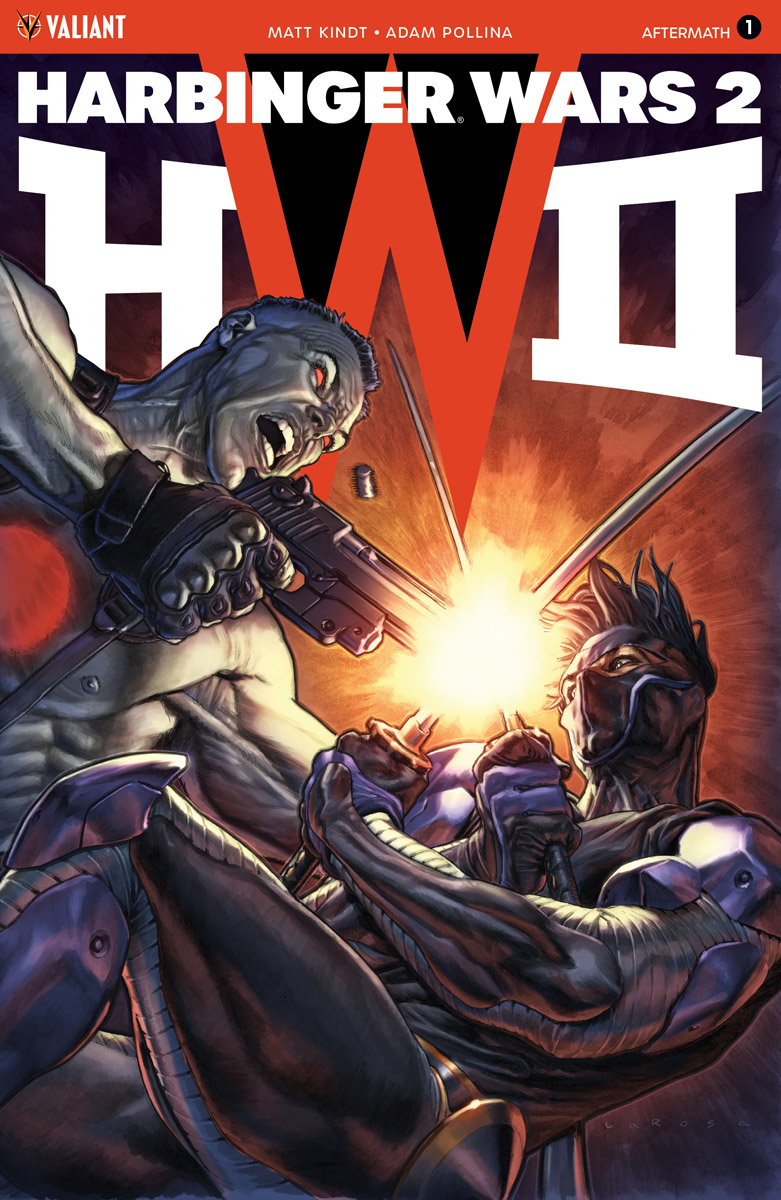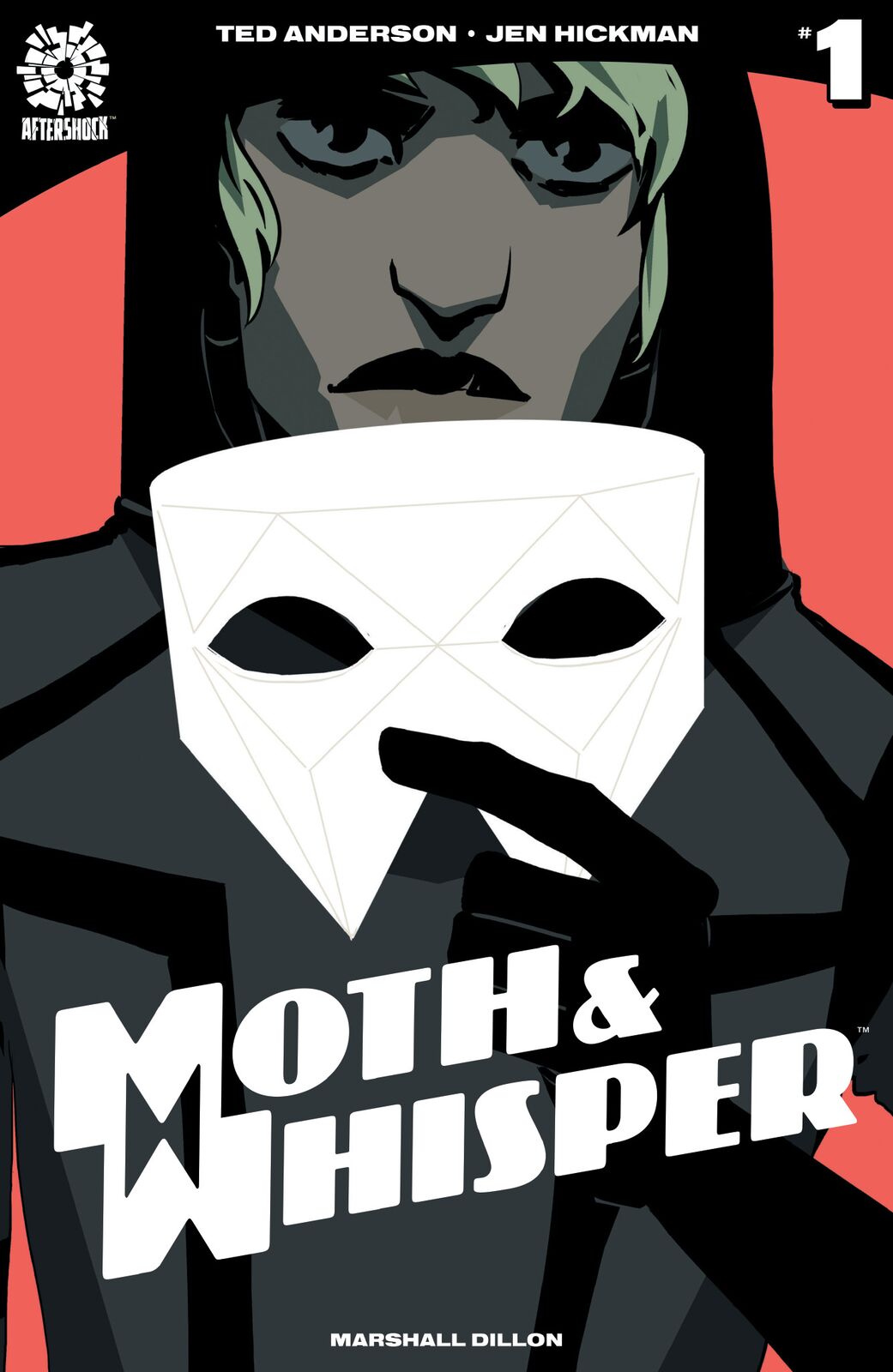Best Comics of February 2019: Thor #10, The Wild Storm #20, and more
By Zack Quaintance — Holy cow, the debate over the final selections for the Best Comics of February 2019 got pretty heated within the committee (of one), raging for what felt like days. Some of our usual superhero favorites—Action Comics/Superman, Immortal Hulk, etc.—have maybe hit places in their runs where we take them just a tiny bit for granted. By the same token though, some of our other favorite long-form superhero narratives are hitting some pretty resonant emotional crescendos (see The Wild Storm, see Thor). But more on that below.
Let me just use this second paragraph of an intro most people scroll right past to address an ongoing narrative that comics are bad now and the industry is dying: stop it. I could go into the business (which is something that myself and roughly 99.9 percent of readers as well as most creators know absolutely squat about), but that’s been done ad nauseam. So instead I’ll point out how little we as fans of stories know about the economics that make them feasible, and wonder (not for the first time) why we waste mental energy on something we don’t understand.
Why did I waste such a long paragraph on it? Who knows! Onto the comics...
Shout Outs
The level of melancholic beauty Die #3 achieves is absurd. It’s just a beautifully-told graphic sequential story that uses the comic’s fantasy setting to tell a tale about WWI that speaks on a deeper level to the creation of the genre by J.R.R. Tolkien. It juuuuust missed this month’s top 5.
I’ll say this about Teen Titans #27: I can’t believe this, but I’ve found myself increasingly interested in the current run on this book by Adam Glass and Bernard Chang. Both creators are wildly exceeding my expectations at the moment.
Also surprising was The Terrifics #13. I’d left this book for dead somewhere around The Terrifics #7. The artists were inconsistent, and the initiative it led—the New Age of DC Heroes—died out of the gate. Yet, the creators have quietly put together one of DC’s best comics, ricocheting around the multiverse and hitting big emotional beats through Plastic Man and his son,. Read this!
One more superhero surprise, and we’ll continue! Uncanny X-Men #11 caught me off guard. I didn’t like the bloated (and frankly lazy) X-Men: Disassembled that re-launched Uncanny X-Men. This comic, however, was the opposite of that: compressed and consequential, it now feels like a new era for the X-Men has started. I’m (cautiously) in.
I still maintain, however, that the best X-Men comic on the market is Livewire #3. Free of the bonds of corporate comics, it can up the stakes for its title character the ways the Big 2 can’t, and the creative team on this book is doing so monthly in such brilliant ways. Read this!
Another book I love for its mix of commentary with a sense of anything can happen is Vault Comics’ Wasted Space. We fortunately got both Wasted Space #6 and Wasted Space #7 this month, and I’m happy to say this comic remains amazing.Staying on the Vault Comics train, These Savage Shores #3 really stood out to me this month, so much so that I almost considered adding a sixth slot to our top 5 (but then, is it really a top 5 still?). Gorgeous and literary, These Savage Shores is a must-read.
This next comic on our list is here because it’s become underrated, which is maybe an odd thing to say about something written by Robert Kirkman of The Walking Dead. Oblivion Song #12, however, was a very good comic with an ending cliffhanger that seems likely to extend our story for years to come. I’m in on it.
Ice Cream Man #10 returned the best horror story in comics to its core concept a bit this month while pushing the background (foreground now?) narrative to new places. This is a must-read creator-owned book if ever there was one.
I really struggled with the last of our customary 10 shoutouts, so let me just note that this final spot could have gone to any of the following: Action Comics #1008, The Green Lantern #4, Guardians of the Galaxy #2, Hot Lunch Special #5, Naomi #2, the entire Batman/Flash crossover, Magic Order #6, or Tony Stark: Iron Man #8.
Best Comics of February 2019
5. Mars Attacks #5
Writer: Kyle Starks
Artist: Chris Schweizer
Colorist: Liz Trice Schweizer
Publisher: Dynamite Comics
There’s just something about a perfectly-told five-issue miniseries that makes it in many ways the idea way to do a comicbook story. If you don’t know what I’m talking about when I say that, I’d highly recommend checking out Kyle Starks and Chris Schweizer’s Mars Attacks. This could be the most emotionally-honest and overall satisfying contained comicbook story I’ve read in years.
It’s also wickedly funny, combining as it does a heartrending father-son survival story with the trademark mostly-irreverent humor that has made Starks such a fun creator to follow through past works such as Sex Castle or Rock Candy Mountain. I didn’t really know anything about the Mars Attacks franchise coming into this and mostly still don’t care, but this book is well worth reading.
4. Archie 1941 #5
Writers: Brian Augustyn & Mark Waid
Artist: Peter Krause (read our interview!)
Colorist: Kelly Fitzpatrick
Letterer: Jack Morelli
Publisher: Archie Comics
As friend of the site the great Will Nevin pointed out on Twitter as I was praising the bejeezus out of this book, the world could use more period comics in general, please. If those comics are anywhere near as good as this one, I’m all for it. In recent years, Archie Comics has experimented quite a bit with its classic characters, doing so in alternate reality scenarios and genres such as horror.
In the context of that experimentation, Archie 1945 comes across as a prestige title, a more dramatic and emotionally-taut story with the same sensibilities and dynamics that have helped the Riverdale gang endure for years. Our committee (of one) has picked Archie 1945 for a spot on this month’s list as a merit award for the entire series as a whole. It’s incredibly deserving, and I sincerely recommend picking it all up now in trade. I’m planning to for my bookshelf.
3. Criminal #2
Writer: Ed Brubaker
Artist: Sean Phillips
Colorist: Jacob Phillips
Publisher: Image Comics
Our committee (of one) doesn’t often like to put comics this close to the debut of a run in our list, but Criminal #2 is more of a fresh vignette in a long-running story than it is an entirely new comic. This is, of course, now Criminal Vol. 8, and as good as the debut issue of this one was, the follow-up was even better.
This was, simply put, an incredibly well-done comic for people who love to read comics. It’s essentially set at San Diego Comic Con, following as it does an older celebrated artist who has turned to less savory ways of making money (see the title, please) and his former protege who gets swept up into whatever it is the aforementioned artist is tangled up in now. It’s a tense and well-told story (it’s Brubaker and Phillips, would you expect any less), and it works well both as a stand-alone issue and as a continuation of events in Criminal #1. Highly recommended.
2. The Wild Storm #20
Writer: Warren Ellis
Artist: Jon Davis-Hunt
Colorist: Steve Buccelatto
Letterer: Simon Bowland
Publisher: DC Comics
The Wild Storm #20 is, in a word, @%$#-ing epic. Okay, that was two words, or, rather, one word and that weird set of characters people use to denote cussing (like you don’t know what I was trying to say). Anyway, our committee (of one) has loved The Wild Storm since it began, featuring as it does such a deliberate and smart narrative. This issue has a bit of that for the first two pages, and then it moves into all action.
What it also does is return one of the best couples in all of comics to our monthly pages: Midnighter and Apollo, appearing here in their most recent depictions. It’s incredibly satisfying, and it makes you realize just how great of a veteran writer Warren Ellis is and has been for a while (if you hadn’t already). He gives us big, fan-service moments within the context of a really smart long-form narrative. I think the biggest compliment I can pay this book is that issues like this one are what make me continue to love superhero comics.
1. Thor #10 (read our full review)
Writer: Jason Aaron
Artist: Mike del Mundo
Colorists: Mike del Mundo & Marco D'Alfonso
Letterer: Joe Sabino
Publisher: Marvel
Speaking of long-form, there is no better (nor longer) story in superhero comics right now than Jason Aaron’s Thor, which has been literally happening for something wild like six years (probably longer). He’s done compact story arcs, big events, and largely contained stories. Thor #10 is maybe all of those things, or a little bit of each, anyway.
It definitely fits into the larger story arc right now, of everyone in the Thor world preparing for the upcoming War of the Realms, which is as big an event as Marvel has had in recent years (which is really saying something). Meanwhile, it’s also a largely self-contained story about a father (Odin) and a son (Thor), kept from being emotionally honest because of toxic masculinity...and the world is all the worse for it. I have a strong suspicion this comic will also end up on my Best Individual Issues of 2019 list. So stay tuned for that in 10 months, ahem.
Check out our monthly lists, plus all of our Best of 2018 coverage, here.
Zack Quaintance is a tech reporter by day and freelance writer by night/weekend. He Tweets compulsively about storytelling and comics as BatmansBookcase.

























